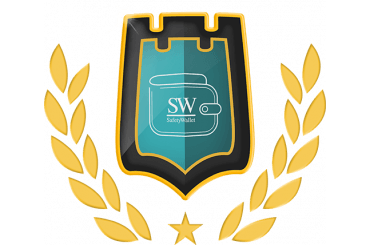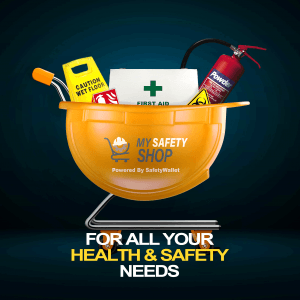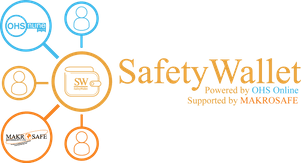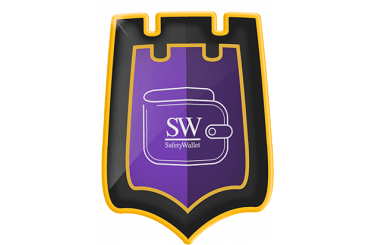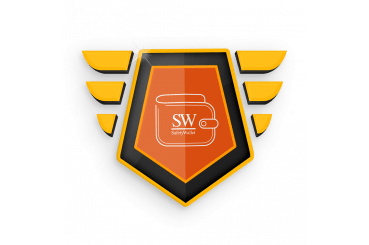
HEALTH AND SAFETY RISK ASSESSMENT
The following laws and regulations are in place in the interest of employers, employees and third-party stakeholders across industries in South Africa:
- The Occupational Health and Safety Act (85 of 1993)
- The Compensation for Occupational Injuries and Diseases Act (COIDA)
- The Basic Conditions of Employment Act (BCEA)
- The Labour Relations Act (LRA)
According to the South African Occupational Health and Safety Act, 85 of 1993, every employer must provide and maintain a working environment that is safe and without risks to the health and safety of employees.
Risk Assessment in the Workplace
The following laws and regulations are in place in the interest of employers, employees and third party stakeholders across industries in South Africa:
- The Occupational Health and Safety Act (85 of 1993)
- The Compensation for Occupational Injuries and Diseases Act (COIDA)
- The Basic Conditions of Employment Act (BCEA)
- The Labour Relations Act (LRA)
According to the South African Occupational Health and Safety Act, 85 of 1993, every employer must provide and maintain a working environment that is safe and without risks to the health and safety of employees.
An occupational health and safety risk assessment is simply a careful look at what could hurt employees while they perform their duties at work. It also helps employers figure out what precautions, training, and skills should be put in place to avoid workplace accidents, injuries, and death.
Risk assessments must be carried out annually but can be done earlier if:
- There is an incident, in which case it must be carried out again to determine the causes of the incident.
- There are significant changes to the work environment, especially when new and different risks can be introduced and must be added to the risk assessment.
If you have any questions, please feel free to speak to one of our Experts
Risk assessments can be ordered via My Safety Shop for completion by a health and safety practitioner.
SafetyWallet offers prospective subscribers a choice between six subscription packages depending on the size of the business and its unique health and safety needs.
The ExpertGuidance subscription has the following unique features:
- A company size with any number of Employees
- We currently have a Hot Deal Promotion in place whereby every client that subscribes to our ExpertGuidance package qualifies for a FREE Compliance Audit!
- A monthly subscription fee of R4730.99 (Excl VAT)
- AI (Walli) support and access for one user.
- Includes injury on duty (IOD) advice.
- Personalised Support: Dedicated hybrid support hours. Includes 2 monthly consulting hours with a Health and Safety Practitioner for the implementation of Health and Safety Systems and Programs.
- Unlimited telephonic (and or Virtual) assistance.
- 30 E-Learning Courses.
- Access to the OHS Mobile App.
- Task-Based Risk Assessment Template.
- Safe Operating Procedures as required by Risk Assessment.
- Legal Updates as provided weekly in our Newsletter.
- Includes access to OHS Online Health and Safety Management System.
- Access to the Triple P Health and Safety Management System.
- Access to the SafetyWallet Compliance Dashboard.
- Access to the SafetyWallet Contractor and Supplier Directory.
- SafetyWallet Incident Root Cause Analysis Support for Accidents.
- Payment plans are available for purchases made from My Safety Shop.
- 10 x Return Of Investment
EXPERTGUIDANCE
Identifying Risks in the Workplace
Employers across South Africa are legally required to perform the necessary procedures that will identify hazards and manage risks that are associated with these risks, such as a task-based workplace risk assessment.
A hazard can simply be defined as a task, tool, application, or condition that could cause harm. A risk is a chance that either of these components will cause harm to employees. Risk Assessments are the best way in which risks can be identified and managed effectively and there are three main types of risk assessments, namely:
- A Baseline Risk Assessment
- A Task-Based Risk Assessment
- Continuous Risk Assessment
Baseline Risk Assessment
A baseline risk assessment provides an overall risk profile for a specific workplace that consists of different work areas and departments. The Baseline risk assessment can be used to prioritise different action programmes for the Task-Based Risk Assessment.
The baseline risk assessment is carried out to provide employers with a benchmark of the types and the size of potential hazards in the workplace. It is important to point out that the baseline is an initial occupational health and safety risk assessment that looks at a wide range of risks to figure out the risk profile that will be used in future risk assessments.
Task-Based Risk Assessment
A Task-Based Risk Assessment is meant to carry out a thorough study that will lead to action plans for dealing with a lot of risks. This type of assessment usually looks at things like operational activities, processes, and business functions that are based on systems and systems.
Usually, it can be used to manage changes in a task or an overall process. It focuses on figuring out the risks that exist in a specific task, process, or activity. Some examples of when a Task-Based risk assessment must be carried out include:
- When new machines or equipment are introduced in a workplace
- A system of work or operations is changed
- After an accident or a near-miss has occurred
- When a risk profile has changed
- When a hazard analysis has been processed
Continuous Risk Assessment
In the workplace, a continuous risk assessment should be done regularly. It is a strong and vital evaluation method that should be used regularly as part of everyday operations. The purpose of a continuous health and safety risk assessment is as follows:
- To identify hazards for immediate action
- Identifying significant risks
- To collect information to modify the Task-Based Risk Assessment
- To collect information to be added to the Baseline Risk Assessment
First-line supervisors must monitor the system, process, and activities to continue to ensure that the system, process, and activities are safe. First-line supervisors should perform it since it should not be to overwhelming or complex for them to handle.
Examples of continuous risk assessments are:
- Inspections
- Critical task observations
- OHS audits
- Work permits
- Toolbox talks
- Medical surveillance
- Job Safety Observations
The Five Steps Involved with Carrying out a Risk Assessment
There is a simple process that will help employers manage workplace health and safety risks effectively. This involves five steps to carry out an effective occupational health and safety risk assessment in the workplace and this consists of:
- Hazard Identification – identifying what could cause harm
- Identify those who may be harmed
- Risk evaluation and precautions
- Record finding and implement actions
- Review the health and safety risk assessment and make necessary changes
Hazard Identification
Any workplace, despite the industry or nature of business of the organisation, will have inherent hazards and risks. Workplace hazards can take many forms including physical, chemical, mental, biological, and several others.
Hazard identification can be done in a wide range of ways but there is one common practice that remains effective, a walkthrough inspection with a checklist. SafetyWallet has a Risk Assessment Template to further assist. This allows for the identification of hazards in the workplace where the processes and activities are being carried out.
To make sure that all hazards can be found, the following can be done:
- Consider all aspects of the work that is being carried out.
- Remember to include infrequent activities such as repairs, cleaning, and others.
- Consider previous incidents, accidents, and near-miss incidents
- Include people from other workgroups such as night-shift workers, drivers, remote workers, etc.
- Evaluate the process involved with the task, the experience and training of those carrying it out, the systems and steps being used, and so on.
- Consider all possible foreseeable and unusual conditions such as some control measures being unavailable in emergencies such as power outages.
- Consider the possibility of products, machines, and equipment being altered, regardless of whether it is by accident or deliberately.
- Always consider all the phases of the lifecycle
Once the hazards have been identified, those who may be vulnerable to them must be identified namely employees, contractors and their staff, visitors to the premises, clients, and members of the public who either interact with the workplace or who work in the vicinity.
People who have disabilities and who fall within different age groups must be considered, along with those who have chronic illnesses, remote workers, pregnant employees, night shift employees, and so on.
For every hazard that is identified the employer must understand who may be harmed and this will help to employ effective management controls. Consult employees to ensure that all groups have been included in the risk assessment.
These control measures must be considered from a legal standpoint which incorporates the requirements of the OHS Act and its regulations, but also other applicable legislation that are required for risk management and control.
Evaluate the Risks and Precautions
Once hazards have been identified and there is a better understanding of who may be affected by them, the employer can proceed to decide what can be done about them. Employers are required to do everything reasonably practicable to prevent harm, which can be interpreted in many ways for different employers in various industries.
However, the easiest way to determine what is reasonably practicable is to compare what is being done against best practices. The current controls must be considered and how effective they are to eliminate or manage the hazards that have been identified.
Record All Findings and Implement Preventative Measures
All significant findings stemming from the health and safety risk assessment must be recorded in a working document. The findings must include a description of the hazard, the groups who may be harmed, and the control measures to either eliminate or manage the risk.
The risk assessment and subsequent controls must be shared with all levels of the organisation. While risk assessments are not a fool-proof way to prevent hazards, risks, and incidents, it is a crucial document that can reduce the chances of harm because it creates awareness.
When inspectors visit the workplace, they can ask the employer to prove that a proper check was done, that they have identified those who could be harmed, that the obvious hazards have been dealt with, that the precautions are reasonable and any remaining risks are low, and that all employees are aware of the process, and they have been involved.
Review
There is a lot of time that passes between risk assessments, which makes way for things to change and occur. For this reason, most workplaces implement a continuous daily risk assessment or checklist that can be done to ensure that the workplace remains safe daily.
If conditions change, the workplace risk assessment can be updated to ensure that employees are safeguarded.
Preventing Risks in the Workplace Based on the Risk Assessment
As part of an effective health and safety management program, employers must ensure that the risks in the workplace can be managed and mitigated.
The overall aim of a workplace risk assessment is to identify hazards in the workplace, then eliminate or reduce the risk of that hazard by implementing control measures. Risk assessments are important because they play an important part in the occupational health and safety management plan.
Risk assessments can:
- Ensure that employees are aware of hazards and risks
- Identify who may be at risk of harm, whether it is employees, visitors, the public, contractors, and so on.
- Determine whether a particular hazard needs a dedicated control program
- Indicate whether the current controls are effective and if there is more that can be done to safeguard people from harm
- Prevent injuries and illnesses from occurring
- Prioritize hazards and their subsequent control measures
- Ensure that employers are compliant with all rules, regulations, and requirements
To ensure that a workplace risk assessment is effective, the following factors must be considered:
- The processes and procedures utilized in the substance's preparation, usage, handling, or storage, etc.
- The engineering controls, work habits, hygiene practices and facilities are essential to limit such exposure.
- Actual and prospective worker exposure (e.g., how many employees may be exposed, what kind of exposure they will get, and how often there will be exposure to the hazard).
- How long and how often is the task carried out.
- The area where the task is being carried out and whether there are other activities in the proximity of the task.
- The overall lifecycle of the product, process, or service.
- The training and education that employees have received on the task and relating risks involved
- The emergency preparedness procedures and employees’ familiarity with such
Risk Assessment and the Impact on Compliance
Apart from safeguarding employees, visitors, the public, and other parties from activities that are carried out by an organisation, risk assessments are a legal requirement as part of the employer’s obligation to ensure a safe, healthy working environment.
When the employer is found non-compliant, they can face serious legal action and fines. By ensuring that frequent and effective risks assessments are carried out, employers can easily prevent injuries, illnesses, death, penalties, fines, and even imprisonment.
Return on Investment with Risk Assessments Conducted Through a SafetyWallet Subscription
SafetyWallet offers a subscription programme that not only encourages compliance with the Occupational Health and Safety Act but rewards employers for doing so. When employers subscribe with SafetyWallet to become subsequent members, they can benefit from the various discounted rewards that can be obtained, leading to a higher return on investment.
SafetyWallet helps employers create an effective Health and Safety Programme. This helps to drive health and safety compliance across South Africa, resulting in safer industries and workplaces where employees and employers are protected against criminal and civil liability.
It also helps to reduce workplace incidents and ensures that employees can return home safely. SafetyWallet is in partnership with MAKROSAFE and OHS Online to provide a health and safety programme, of which the workplace risk assessment forms a crucial part, helping employers become compliant and improving their ROI and bottom line overall.
